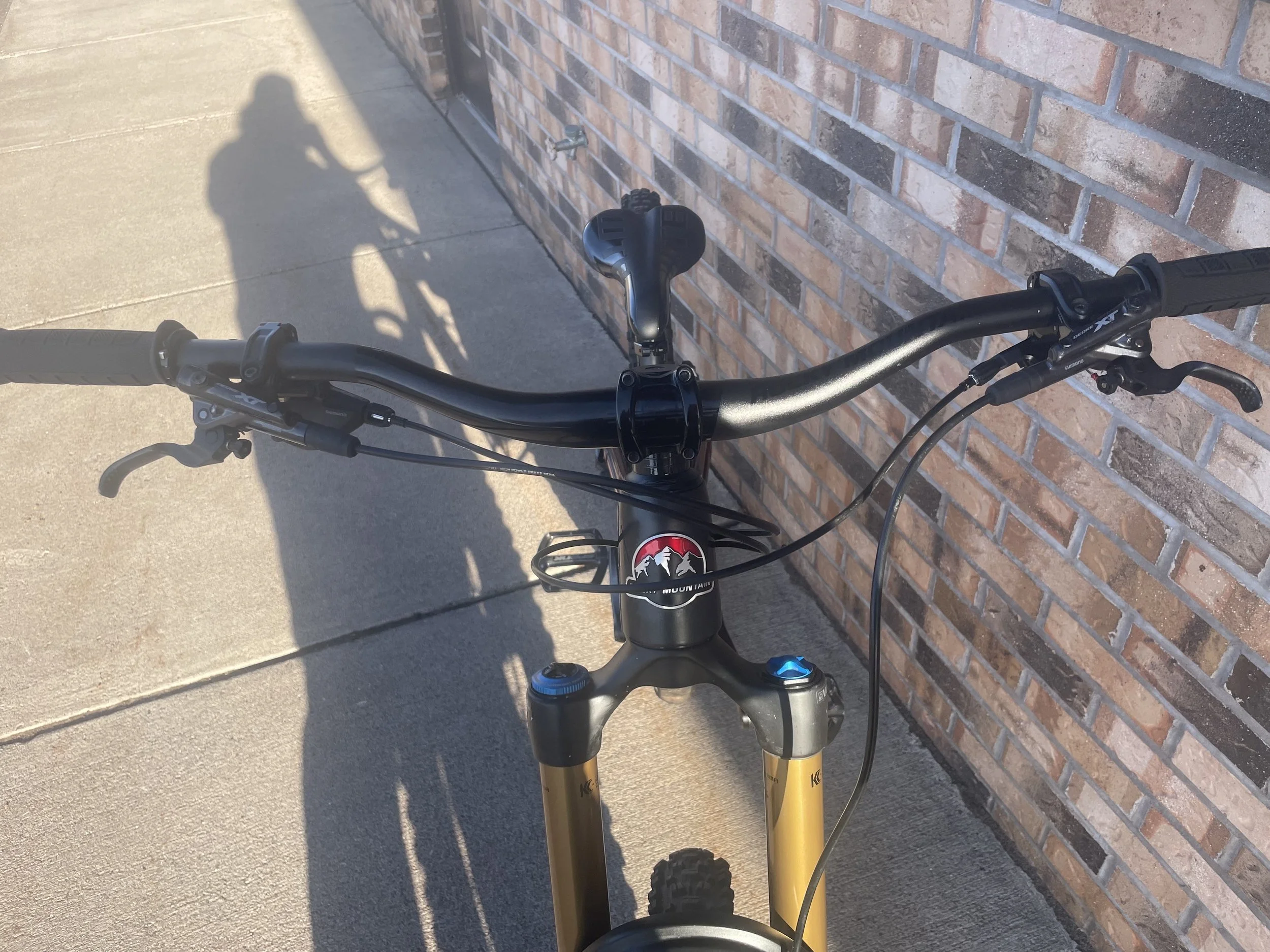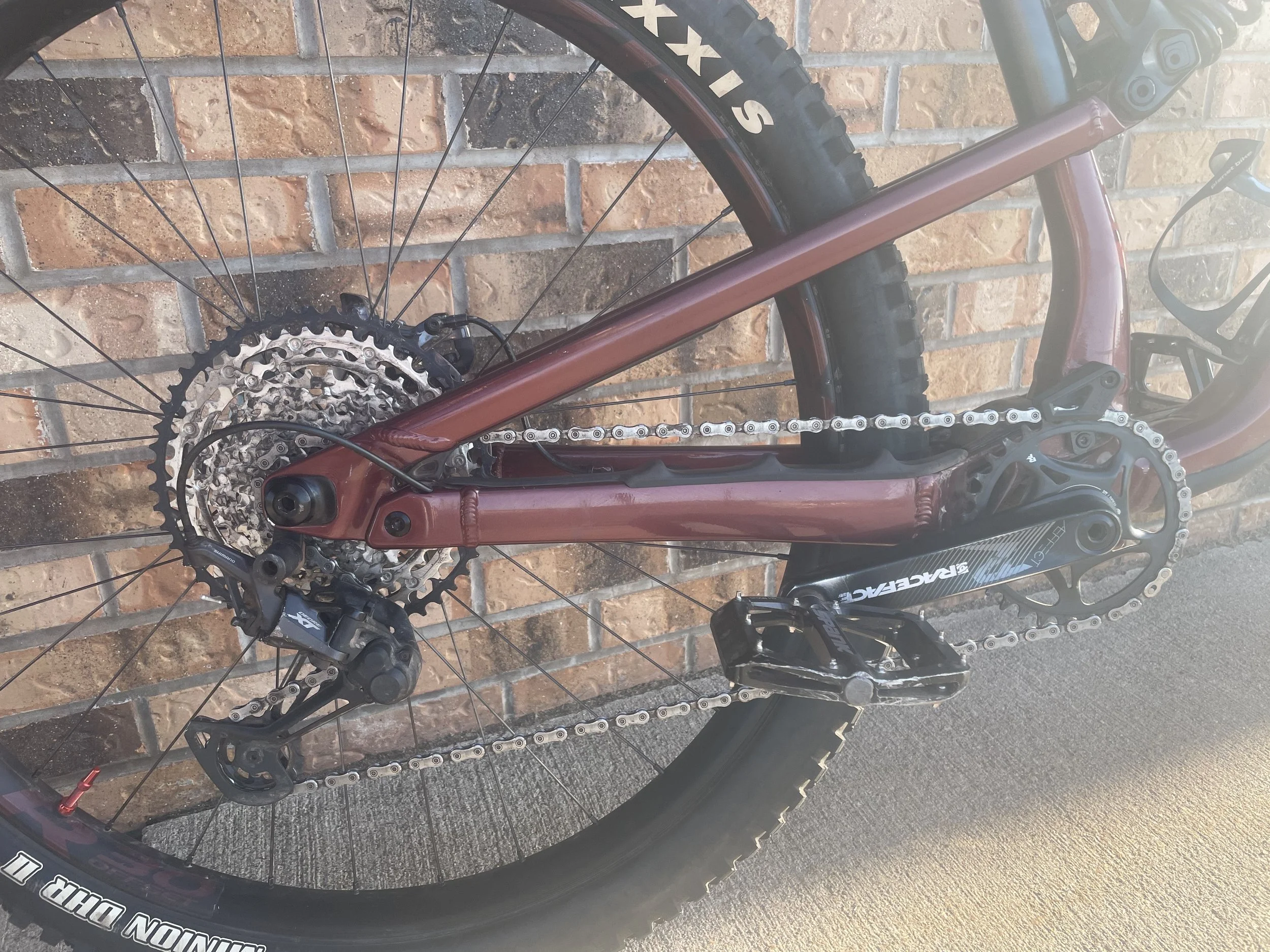REVIEW: Rocky Mountain Altitude 2023 vs 2025
For something a little different this week, were making a direct comparison of two different generations of bike to answer the age-old question – What changes?
Altitude 2023
The Altitude is RM’s long travel enduro bike. I know, a little overkill for the area, but I promise they’re fun. This bike in particular is one I have a lot of experience riding, since it’s my daily bike. So how does it ride?
The Altitude is a very aggressive enduro bike, boasting 170mm of travel in front and 160 rear. It compliments that with very slack geometry, even more so with the ride 9 and axle flip chips to make it even slacker and longer. The ride 9 can also be used to change the feel of the shock, from more progressive to more linear.
Surprisingly, the Altitude climbs decently well. While it’s by no means a mountain goat pounding up climbs like nothing, for as large of a bike that it is it climbs incredibly well. I talked a bit last review about how RM makes bikes that climb particularly well, and the Altitude is no different.
This does not mean that the Altitude sacrifices any downhill chops. With a nice planted feel to tackle even the most rough rock gardens, but enough support (From the climbing ability!) to allow you to pop off jumps relatively easily. I have used it everywhere from Spirit mountain to Copper Harbor and never felt anything out of reach for the capabilities of the Altitude.
Altitude 2025
So how does that compare to the updated model, from 2024-2025? Despite the very noticeable differences, it carries many of the feel traits that I really like about the 2023.
It boasts similar numbers to the 2023, just with minor tweaks. Slightly slacker headtube, steeper seattube, longer wheelbase. They did swap the ride 9 for the simpler ride 4, giving you 4 options rather than 9. They do compensate for this with +/- 5mm headset cups to better change the reach and headtube angle.
Thankfully, the 2025 continues the RM trend to climbing well from 2023. One small thing to note is with the changed shock position, it you like to lock out the shock for extra support in the climbs, it’s a lot harder versus the higher shock of the 2023.
Downhill is where the most noticeable change is. The lower shock makes the bike feel even more planted, with it’s low center of gravity helping over rough trails or for confidence in corners. The slight downside is it takes a little more effort to jump, but if you want a playful freeride bike, the Slayer is right there.
What Changed?
So, for the burning question and point of the whole comparison – What changed, and is it worth aiming for the newest bike, or go for the tried-and-true old design? Well, most of the time, the new is going to be better, if only slightly. Some parts I didn’t mention that make a big quality of life difference is features new on the 2025 like the downtube storage, the flipchip for mullet setup, or the updated specs with new parts. All of these things were absent from the 2023, and while some people can live without downtube storage, or a mullet bike, there are those who much rather have their bike with these quality-of-life features. Does the 2023 still work and hold up against the 2025? Of course, just come to the group rides and see. Does the 2025 have some nice quality of life updates from the 2023? Sure, so both still have homes in the bike world, but maybe that new bike is better than tracking down a used one or new-old stock.
Happy Adventuring!
-Peter









